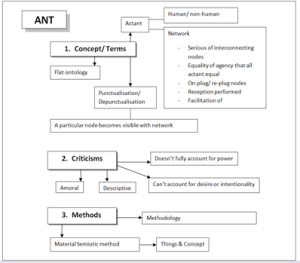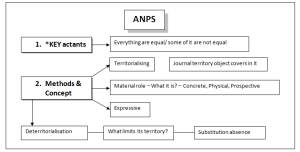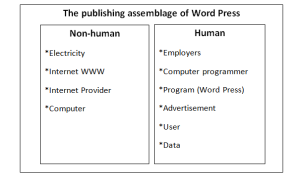Analyzing interweaver of publishing’s relation to broader society and the changes in publishing, media and the social, based on two theories which are ‘Actor Network Theory’ by Bruno Latour and ‘Assemblage Theory’ by DeLanda
The term ‘assemblages’ called by Bruno Latour is means a network which combine with lots of different parts, and it can be divided to human and non-human “actants” . Bruno Latour also thinks that many relations act as a whole are based on the interactions between material and concept.
Based on the ‘Actor Network Theory’, the human of component in media may include producer, reader, distributor, reception, audience, electronic device repairer, etc. On the other hand, non-human “actants” may include iPad, iPhone, erearder, font, network system, software, etc. Both human and non-human elements in media work together constantly because there is relationship between all of the elements.
DeLanda’s assemblage theory was basically similar to Bruno Latour’s theory. DeLanda’s theory indicated that all components and relations had been connected and constantly changing. DeLanda provided an example of assemblage that indicated the importance and different role of each part. The material role and expressive role in DeLanda’s assemblage theory can be known as human and non-human in Bruno Latour’s theory. Different roles have their own function and the components can be recombine or replace various parts. All of the roles are use to maintain each other (Shaviro, S, 2007).
Below is the example of assemblage
Reference:
‘Actor Network Theory’, Wikipedia, <http://en.wikipedia.org/wiki/Actor-network_theory> accessed in 18 March 2012
‘Actor Network Rochambeau’, any-space-whatever blog, <http://www.anyspacewhatever.com/actor-network-rochambeau/>, November 14, 2010 (on Latour)
Shaviro, Steven (2007) ‘DeLanda: A New Philosophy of Society’, The Pinocchio Theory
Tatnall & Gidding, 1999, <http://www.youtube.com/watch?v=X2YYxS6D-mI> accessed in 18 March 2012



